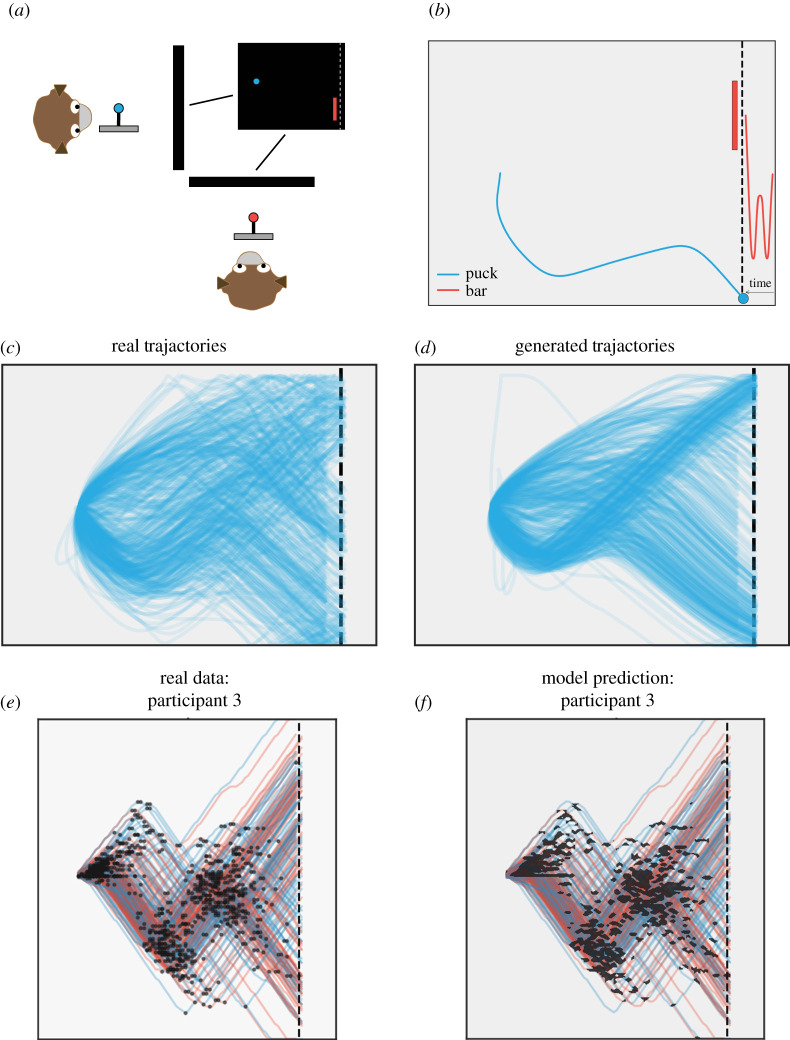Figure 4.
Task from [72]. (a) Pairs of monkeys competed in a zero-sum, real-time game with continuous joystick inputs. One player controlled the position of a blue ball, the other the vertical position of a red bar. The goal of the blue player was to guide the ball past the dotted line at the right of the screen, while the red player attempted to block the ball with the bar. (b) Example of a single pair of player trajectories on a single trial. For display purposes, the trajectory of the bar has been extended in time along the x-axis, though the bar could only move vertically. (c) Continuous control resulted in highly varied trajectories, but these could be captured by a model of players' coevolving goal states that generated realistic trials (d). (e) In a version of the same task in human subjects, players’ trajectories were characterized by sparse changes in trajectory (black dots), and these changepoints could be predicted by modelling players' policies as a function of continuous game state (f). Black patches represent regions of increased probability of direction change. Blue traces indicate trials played against a human bar opponent, red traces those played against a computer. Adapted from [71,72].

